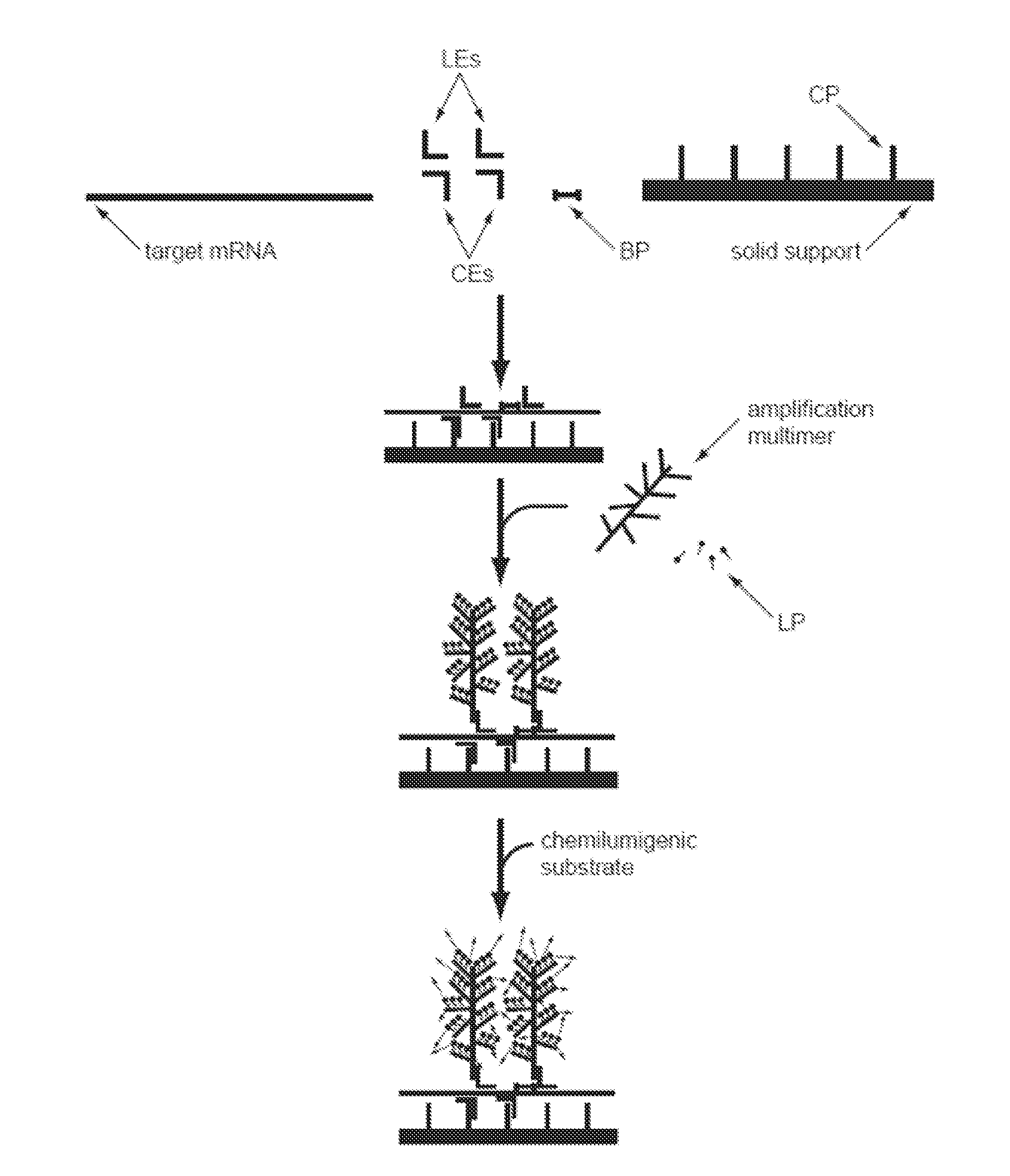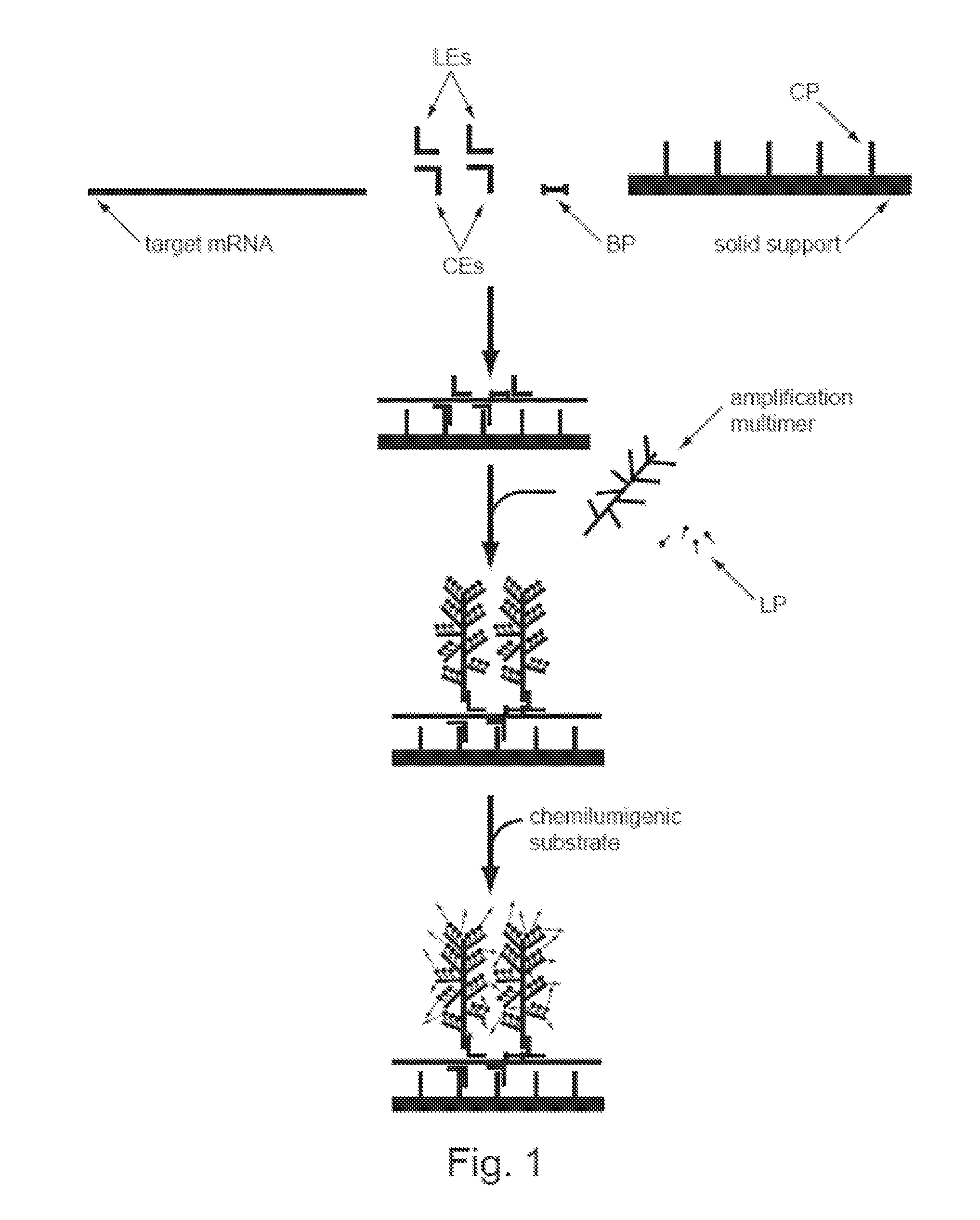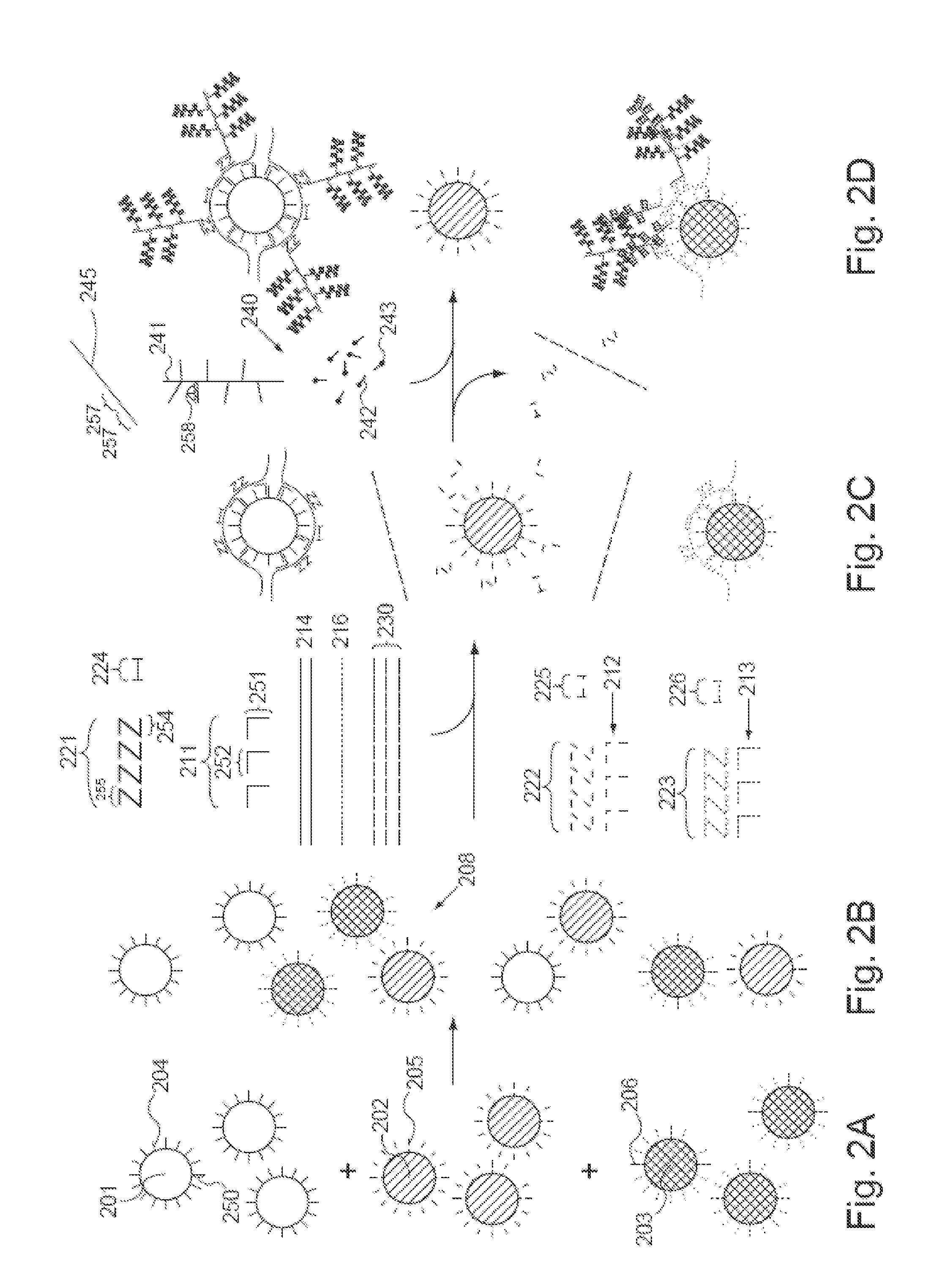Detection of Nucleic Acids
a nucleic acid and detection technology, applied in combinational chemistry, biochemistry apparatus and processes, library screening, etc., can solve the problems of difficult to adjust the length of the oligonucleotide probe to provide the desired specificity and sensitivity, time-consuming approaches, and limited sensitivity, so as to achieve the effect of easy modification
- Summary
- Abstract
- Description
- Claims
- Application Information
AI Technical Summary
Benefits of technology
Problems solved by technology
Method used
Image
Examples
Embodiment Construction
[0074]The present invention provides methods, compositions, and kits for capture and detection of various types of nucleic acids, particularly multiplex capture and detection. As will be shown in more detail below, the disclosed methodologies and compositions are highly adaptable to many applications. A non-limiting list of various embodiments is as follows:
[0075]A general class of embodiments includes methods of capturing two or more nucleic acids of interest and identification thereof. In the methods, a sample, a pooled population of particles (or microparticles, or encoded microparticles), and two or more subsets of n target capture probes, wherein n is at least two, are provided. The sample comprises or is suspected of comprising the nucleic acids of interest. The pooled population of particles includes two or more subsets of particles. The particles in each subset have associated therewith a different capture probes. Each subset of n capture extenders is capable of hybridizing ...
PUM
| Property | Measurement | Unit |
|---|---|---|
| Carrier concentration | aaaaa | aaaaa |
Abstract
Description
Claims
Application Information
 Login to View More
Login to View More - R&D
- Intellectual Property
- Life Sciences
- Materials
- Tech Scout
- Unparalleled Data Quality
- Higher Quality Content
- 60% Fewer Hallucinations
Browse by: Latest US Patents, China's latest patents, Technical Efficacy Thesaurus, Application Domain, Technology Topic, Popular Technical Reports.
© 2025 PatSnap. All rights reserved.Legal|Privacy policy|Modern Slavery Act Transparency Statement|Sitemap|About US| Contact US: help@patsnap.com



